Awards Ceremony Recognizes NRL Researchers
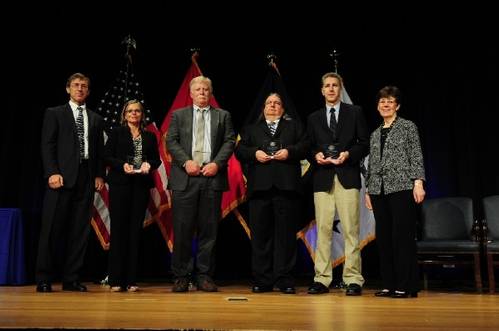
Assistant Secretary of the Navy (Research, Development & Acquisition) Sean Stackley (left), and Dr. Delores Etter (right) present the award to Ms. Pamela Posey, Dr. James Cummings, Dr. Alan Wallcraft, Mr. Joseph Metzger (left to right), NRL Oceanography Division. (Photo: U.S. Naval Research Laboratory)
Eighteen U.S. Naval Research Laboratory (NRL) scientists and engineers representing ten NRL research divisions were recognized with the prestigious Dr. Delores M. Etter Top Scientist and Engineer of the Year Award. The award ceremony was held on June 6th, with Assistant Secretary of the Navy (Research, Development & Acquisition) Sean Stackley, and Dr. Delores Etter presenting the awards.
This annual award is sponsored by the Assistant Secretary of the Navy for Research, Development and Acquisition. Former Assistant Secretary of the Navy, Delores Etter established the awards in 2006 to recognize scientists and engineers who have made significant contributions to their fields and to the fleet. The NRL researchers honored as 2013 Top Scientists and Engineers are as follows:
Information Technology Division
Mr. Gautam B. Trivedi is recognized for leading research efforts to develop the Flying Squirrel Wireless Network Discovery Application Suite. This toolkit allows Department of Defense network defenders to detect, analyze and locate potentially unauthorized wireless transmitters that may compromise Department of Defense networks. The wide range of capabilities supported by this toolkit allows network defenders to either conduct periodic scans or implement a persistent surveillance system, and has greatly improved the network security posture of Department of Defense networks.
Flying Squirrel was selected as the Department of Defense standard 802.11 wireless discovery application under the auspices of the United States Strategic Command-chaired Enterprise-wide Security Solutions Steering Group (ESSG) in 2006. As a result of this selection, Flying Squirrel software is now available to any DoD user at no cost, resulting in its wide use across Department of Defense. Subsequently, the scope of the Flying Squirrel program has dramatically expanded, with new and improved capabilities being introduced every year, such as the ability to detect Bluetooth transmitters, real-time mapping of wireless transmitters and integration with an IMU for GPS-denied environments.
Mr. Robert B. Adamson is recognized for his initiatives in open, collaborative research and modeling that have accelerated the development of tactical edge network technology. His robust, efficient protocols for wireless, tactical networks are used across DoD. He has led and architected the development of next-generation, emulation-based network modeling that is key to the scientific understanding of mobile, wireless networks and critical in developing systems that have a high level of assurance in meeting mission requirements.
Mr. Adamson's innovations have transitioned to a number of programs, reducing cost and directly supporting the DoD goal of deploying effective network-centric and autonomous tactical systems. Mr. Adamson's innovations and developments have high value to the Department of Navy and Department of Defense in general. His past work with NORM data transport and its predecessor, Multicast Dissemination Protocol transitioned to Naval Special Warfare tactical applications, the Navy Submarine Intelligence Shared Data Server system, the U.S. Army Force Command Brigade and Below system, the USAF Space Base Infrared Sensor system, and other Department of Defense systems. Mr. Adamson's new advancements extend the capability of protocols, providing improved performance for almost any network information transfer need. Recognizing the applicability of this work to existing applications, Mr. Adamson implemented a software "proxy" that allows the communication benefits to be enabled for almost no additional system cost with the installation of his government-developed solution.
Optical Sciences Division
Dr. Keith J. Williams is recognized for advancing the state of the art in RF photonics with the development of three new and emerging concepts for microwave systems. His research shows that these systems offer many advantages for the Navy and Department of Defense including high performance linear links for wideband electronic warfare applications, wideband nonlinear amplification concepts for electronic warfare and radar systems, and wideband transmit and receive antenna array beamforming systems. Dr. Williams has also demonstrated that these systems are very practical for Navy and Department of Defense use on a variety of platforms.
The three technologies that Dr. Williams has developed over the last year have great potential for the operational Navy and Department of Defense. After he achieved laboratory validation, Dr. Williams quickly realized that the technologies could directly impact the performance of operational systems in several of the most challenging scenarios that they face. Earlier attempts to solve these problems with extensions of existing technology have been grossly inadequate, thus demanding new and innovative solutions. All three of Dr. Williams' accomplishments have been judged to be breakthroughs, and all are presently in the stages of development for transition to deployed systems.
Tactical Electronic Warfare Division & Chemistry Division
The team of Dr. Warren W. Schultz (Chemistry Division), Mr. Joseph MacKrell (Tactical Electronic Warfare Division), Mr. Alvin Cross (Tactical Electronic Warfare Division), Mr. Matthew W. Hazard (Tactical Electronic Warfare Division) and Dr. Benjamin D. Gould (Chemistry Division) is recognized for their role in the launch of the XFC UAS (eXperimental Fuel Cell Unmanned Aerial System) from the torpedo tube of a submerged U.S. Navy submarine. The XFC is an expendable, fully autonomous, all electric, fuel cell powered folding wing UAS with an endurance of greater than six hours.
This successful test demonstrates the ability of a fuel cell powered UAS to provide a stealthy, long-duration organic intelligence, surveillance and reconnaissance (ISR) asset to the Navy submarine force. The successful submerged submarine launch of the XFC UAS demonstration was briefed to the Chief of Naval Operations and announced to the press in December 2013. The impact in the submarine force has been significant in that two follow-on programs are already being planned to field this technology. The challenge of providing a long-endurance UAS to extend a submarine's access is met with XFC, and will lead to new strategic and tactical planning within the submarine force.
Materials Science and Technology Division
Dr. Alberto Piqué is recognized for his contributions to the development of laser-based direct-write (LDW) techniques and their integration with additive manufacturing (AM) processes. Dr. Piqué's work combining LDW with AM is expected to make possible the printing of highly functional 3D parts with integrated electronics, which are difficult and expensive to fabricate with current manufacturing techniques, while reducing the time and cost that takes to bring such design to fruition. These efforts will make it possible for researchers to implement and test advanced prototypes for wireless communication, radar, electronic warfare, autonomous systems, chemical and bio-sensing applications for the Navy and Department of Defense. It is anticipated that future generation mission-specific Navy and Department of Defense components and systems will require processes and techniques beyond traditional manufacture and printed circuit board fabrication.
Additive manufacturing is considered a game changer for design and fabrication, since it will streamline the entire process by reducing the number of steps from concept to part. Similarly, direct-write processes make it possible to fabricate custom electronics in less time and at lower cost than with existing techniques such as photolithography. By combining these two processes, it will be possible to print "smart" parts and components, essential for the development of future capabilities in distributed autonomous systems, reconfigurable communication components, low observable treatments and customizable modules or parts for unmanned systems, just to name a few but highly relevant applications for the Navy and Department of Defense.
Center for Bio/Molecular Science and Engineering
Dr. James B. Delehanty is recognized for spearheading the implementation of nanoparticle materials in cellular applications (specifically, semiconductor quantum dots (QDs)) for the purposes of cellular labeling, imaging and sensing. Understanding the interaction of nanoparticle materials with living systems is a critical endeavor for the Navy and Department of Defense, and the larger scientific community, as nanoparticles find increasingly more uses in manufacturing processes, medical diagnostics and in therapeutic formulations. In 2013, his work on understanding the cellular uptake and distribution of QDs demonstrated how these materials can be used as superior alternatives to traditional fluorophores for cellular labeling, sensing, cargo delivery and the modulation of cellular behavior.
The value of Dr. Delehanty's research efforts to Navy and Department of Defense are multifold. Because of the President's National Nanotechnology Initiative (Research Directions 2020), the Department of Defense is directly tasked with remaining at the forefront of research efforts that specifically emphasize the development of "smart nanomaterials for the analysis of molecular and subcellular events at the nanometer scale." Understanding how to control nanoparticle materials within the context of cells is critical to success in this endeavor. The knowledge base resulting from Dr. Delehanty's research will directly impact on future Navy and Department of Defense operations as nanoparticle-based diagnostics and therapeutics are already beginning to play a role in the maintenance of warfighter health.
Dr. Brandy J. White is recognized for her role in developing functionalized fabrics used in personal protective equipment. She leads efforts directed at the development and application of novel sorbents providing capture and decontamination of chemical threats from both liquid and vapor phases. The versatile sorbents can be tailored to the chemical threat targets of interest and adapted to accommodate various application formats. Offering distinct advantages over state-of-the-art-materials in target capture, catalytic activity, and physiological burden, these sorbents provide the potential for significant advancements in personal protective equipment.
Dr. White's efforts in 2013 demonstrate the utility of these materials in the development of protective fabrics. The novel sorbents developed by Dr. White and her team offer the potential for improved performance in a range of protective applications. Her ingenuity of combining the engineered porous structures with compounds providing spectrophotometric or catalytic activities led to materials that can provide capture of toxic industrial compounds/toxic industrial materials (TIC/TIM) gas targets that are poorly addressed by current state-of-the-art materials. These are key targets for the development of improved gas mask technologies for the warfighter. While the sorbents provide nerve agent binding capacities similar to those of carbon materials, their catalytic activity greatly extends the functional lifetime and offers advantages to decontamination procedures.
Acoustics Division
Dr. Zachary J. Waters is recognized for leading a team of scientists and engineers in demonstrating the overall approach of new structural acoustics (SA) based detection and classification processing on the SQQ-89 fleet sonar system. This development will provide high performance detection of some of the most difficult ASW targets without the need to create an entirely new system. This new technology is of significant value to the Navy in that it allows high-performance detection and classification of difficult ASW targets even in shallow water environments using an automated physics-based approach to achieve target-clutter separation. Dr. Waters' developments enhance the Navy's ability to conduct undersea warfare by providing high performance detection of some of the most difficult ASW targets without the need to create an entirely new system.
Remote Sensing Division
Dr. Joseph F. Helmboldt is recognized for developing a technique for remote sensing of the ionosphere with unprecedented spatial resolution, accuracy and precision. This new tool provides total electron content measurements at unprecedented spatial resolution and precision with unique applicability to small-scale transient phenomenology such as traveling ionospheric disturbances (TIDs) - an important source of error in space-based communication and navigation systems. Dr. Helmboldt's work has enabled new modeling studies of TIDs and R&D programs to characterize the generation of TIDs by acoustic-gravity waves, originating from explosions on the surface or in the atmosphere, as a first step toward the exploitation of ionospheric remote sensing for nuclear and conventional explosion detection and geolocation.
With the increasing sophistication, accuracy, and importance of modern radio communications and navigation systems, particularly with GPS deployment, ionospheric effects are now often the largest source of error. Thus, researchers require a better, deeper understanding of the ionosphere and its highly detailed, constantly varying structure. While ground-based GPS receiver networks, as well as ionosonde networks, which probe the ionosphere from the bottom using ground-based, swept-frequency transmitters, provide information on large-scale ionospheric structures (hundreds to thousands of kilometers in size), little or no information is available on the small scale structures (tens to hundreds of kilometers). These rapidly varying structures remain a significant source of error in precision navigation and communications systems. Dr. Helmboldt demonstrated that delta TEC derived from phase information contained in HF/VHF interferometric phase data has sufficient resolution and precision to close this small-scale
ionospheric structure information gap. Further, Dr. Helmboldt's work has opened the door to ionospheric exploitation of the vast interferometric imaging data base, collected for more than two decades at the VLA, and similar imaging facilities, primarily for astrophysical purposes.
Oceanography Division
The team of Mr. E. Joseph Metzger, Dr. James A. Cummings, Dr. Alan J. Wallcraft, and Ms. Pamela G. Posey is recognized for their transition of the Global Ocean Forecasting System (GOFS), a high resolution global ocean prediction system that provides the warfighter with daily forecasts of temperature, salinity, currents, mixed layer depth and the location of sea ice and mesoscale features such as eddies, meandering currents and fronts. These environmental fields impact Navy sensor system performance, ocean acoustics, mine drift and search and rescue.
GOFS is designed around the new Hybrid Coordinate Ocean Model, and is used to nowcast/forecast global ocean "weather" out to seven days. The ocean environmental forecasts from GOFS are used by the Department of the Navy on a daily basis and disseminated from the operational center, the Naval Oceanographic Office (NAVOCEANO), both on secret internet protocol router and non-classified internet protocol router networks. System information is integrated into the decision process that determines operations ranging from Navy strategic force placement to tactics at the scales of submarine barriers. At NAVOCEANO, subject matter experts use the data daily to respond to hundreds of service requests from the fleet. The result is a force multiplier by the taking advantage of conditions that are conducive to particular operations. Extending sonar prediction, keeping from harm's way in ice regions, guiding times when divers can be in the water, are regular applications in addition to addressing emergency response when Navy ships provide aid during disasters.
Marine Meteorology Division
Dr. Melinda S. Peng is recognized for leading a skillful multi-disciplined team to develop, test, and implement the Navy Global Environmental Model (NAVGEM) to provide valuable weather forecasts to Navy and Department of Defense forces deployed around the world. NAVGEM proved to be vastly superior to older models, particularly in the accuracy of parameters critical to Navy operations such as tropical cyclone intensity and movement, lower level wind speeds, and wave heights.
NAVGEM employs an innovative Semi-Lagrangian/Semi-Implicit technique that produces forecasts of the much higher resolution using the same computational resources as older systems, resulting in the most significant Navy global NWP advancement over the past 20 years. Navy and Department of Defense land, sea, and air components depend on accurate forecasts to support operational mission planning and execution, as well as day-to-day resource protection of ships, aircraft, and personnel during this period of budget uncertainty. More accurate global models provide more accurate initial conditions for mesoscale models, which result in better tactical level forecasts for the warfighter.

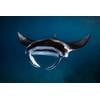
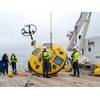

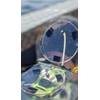

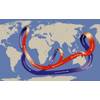






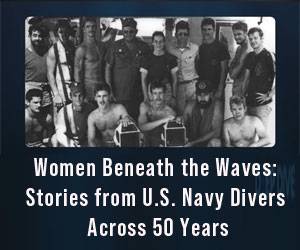

 August 2025
August 2025



